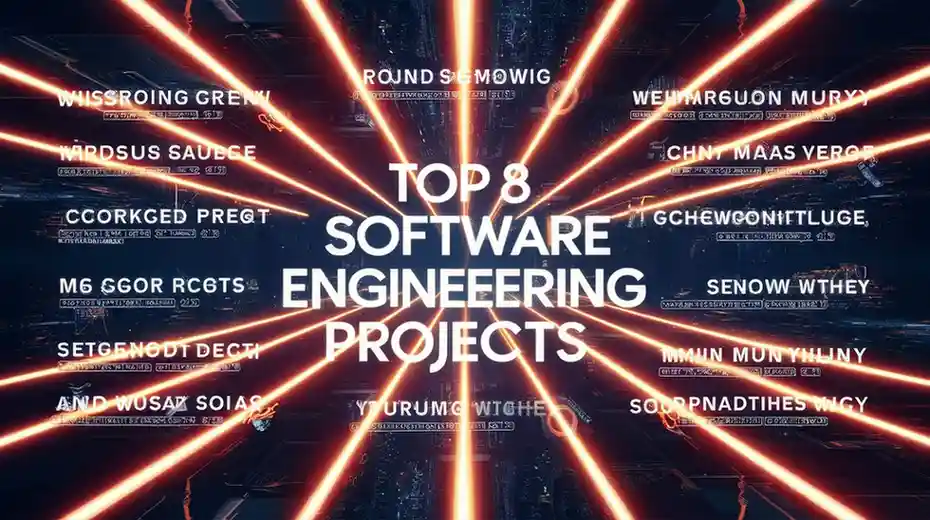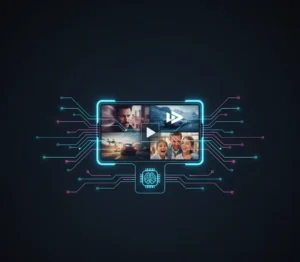Introduction
In the competitive landscape of software engineering in 2025, having a standout resume is crucial to landing your dream job. One of the most effective ways to differentiate yourself is by showcasing impactful projects that demonstrate your skills, creativity, and problem-solving abilities. Building the right projects not only enhances your portfolio but also provides tangible evidence of your expertise to potential employers.
This comprehensive guide outlines the top 8 projects to build for software engineering resumes in 2025, offering insights into why these projects are valuable, how to execute them, and tips to make them shine on your resume. Whether you’re a budding developer or an experienced engineer looking to refresh your portfolio, these project ideas will help you stay ahead in the ever-evolving tech industry.
💡 Tip: Choose projects that align with your career goals and interests. Passion-driven projects often lead to more impressive and authentic results.
🛍️ 1. E-Commerce Platform
🚀 Why Build It?
E-commerce platforms are complex systems that encompass various aspects of software engineering, including front-end development, back-end systems, database management, and security. Building an e-commerce site showcases your ability to handle full-stack development and understand the intricacies of online transactions.
🛠️ Key Features to Implement
- User Authentication: Secure login and registration systems.
- Product Listings: Dynamic product pages with search and filter functionalities.
- Shopping Cart & Checkout: Seamless cart management and payment gateway integrations.
- Admin Dashboard: Manage products, orders, and user roles.
- Responsive Design: Ensure the platform works smoothly on all devices.
🔧 Pro Tip: Integrate third-party APIs like Stripe for payment processing to demonstrate your ability to work with external services.
📚 Recommended Technologies
- Frontend: React.js, Vue.js, or Angular
- Backend: Node.js with Express, Django, or Ruby on Rails
- Database: PostgreSQL, MongoDB, or MySQL
- Hosting: AWS, Heroku, or DigitalOcean
💡 Success Story
Jane Doe built an e-commerce platform using React and Node.js, incorporating advanced search algorithms and real-time inventory updates. Her project not only secured her a position at a leading tech company but also earned recognition in a regional hackathon.
📱 2. Social Media Application
🚀 Why Build It?
Creating a social media application allows you to explore real-time data handling, user interactions, and scalable architecture. It demonstrates your capability to build interactive and user-centric applications, which are highly valued in today’s job market.
🛠️ Key Features to Implement
- User Profiles: Customizable profiles with bio and profile pictures.
- Friend System: Add, remove, and manage friends or followers.
- Post Creation: Create, edit, and delete posts with text, images, or videos.
- Real-Time Notifications: Notify users of new interactions like likes, comments, and messages.
- Privacy Settings: Allow users to control their data visibility and sharing preferences.
💡 Advice: Focus on building a clean and intuitive user interface to enhance user experience and engagement.
📚 Recommended Technologies
- Frontend: React Native or Flutter for mobile applications
- Backend: Firebase, Node.js with Socket.io for real-time features
- Database: Firestore, MongoDB, or Firebase Realtime Database
- Authentication: OAuth 2.0, JWT
💡 Success Story
John Smith developed a social media app that included unique features like voice messaging and AI-driven content recommendations. His innovative approach impressed recruiters at a top-tier tech firm, leading to a lucrative job offer.
💬 3. Real-Time Chat Application
🚀 Why Build It?
A real-time chat application is a testament to your ability to implement real-time data transmission and manage concurrent connections. It’s a practical project that highlights your understanding of networking protocols and real-time communication technologies.
🛠️ Key Features to Implement
- User Authentication: Secure sign-up and login processes.
- Real-Time Messaging: Instant messaging capabilities using WebSockets.
- Group Chats: Create and manage chat groups with multiple participants.
- Message History: Store and retrieve past conversations.
- Typing Indicators: Show when a user is typing a message.
🔍 Pro Tip: Implement end-to-end encryption to enhance the security and privacy of user communications.
📚 Recommended Technologies
- Frontend: React.js or Angular
- Backend: Node.js with Socket.io or Django Channels
- Database: MongoDB, Redis for caching
- Authentication: JWT, OAuth
💡 Success Story
Emily Johnson created a real-time chat application that supported large-scale group conversations and integrated video calling. Her project showcased her ability to handle complex backend processes, earning her a role at a fast-growing startup.
🤖 4. Machine Learning Project
🚀 Why Build It?
Machine Learning (ML) projects demonstrate your ability to work with data, implement algorithms, and derive actionable insights. They are highly sought after in various industries, from healthcare to finance, making them a valuable addition to your resume.
🛠️ Key Features to Implement
- Data Collection & Cleaning: Gather and preprocess relevant datasets.
- Model Training: Implement and train ML models using algorithms like regression, classification, or clustering.
- Evaluation Metrics: Assess model performance using metrics like accuracy, precision, recall, and F1-score.
- Deployment: Deploy the model using APIs or integrate it into a web application.
- Visualization: Present data and model results through interactive dashboards.
📊 Fact: According to LinkedIn’s 2024 Emerging Jobs Report, Machine Learning Engineers are among the top in-demand roles with significant growth projected for 2025.
📚 Recommended Technologies
- Languages: Python, R
- Libraries: TensorFlow, PyTorch, Scikit-learn, Pandas
- Tools: Jupyter Notebook, Google Colab
- Deployment: Flask, Docker, AWS SageMaker
💡 Success Story
Michael Lee developed a machine learning model that predicted stock market trends with high accuracy. His innovative approach and successful deployment impressed hiring managers at a leading financial institution, securing him a coveted position.
⚙️ 5. DevOps Automation Tool
🚀 Why Build It?
DevOps projects showcase your ability to streamline development processes, manage infrastructure, and automate workflows. They are crucial for enhancing efficiency and reliability in software development, making them highly valuable to employers.
🛠️ Key Features to Implement
- Continuous Integration/Continuous Deployment (CI/CD): Automate the build, test, and deployment pipelines.
- Infrastructure as Code (IaC): Manage and provision infrastructure using tools like Terraform or Ansible.
- Monitoring & Logging: Implement real-time monitoring and logging solutions.
- Containerization: Use Docker to containerize applications for consistent environments.
- Orchestration: Manage containers at scale with Kubernetes.
🔧 Pro Tip: Incorporate security best practices into your DevOps tool to demonstrate a holistic understanding of the development lifecycle.
📚 Recommended Technologies
- CI/CD Tools: Jenkins, GitHub Actions, GitLab CI
- IaC Tools: Terraform, Ansible, CloudFormation
- Containerization: Docker
- Orchestration: Kubernetes
- Monitoring: Prometheus, Grafana
💡 Success Story
Sarah Williams built a DevOps automation tool that reduced deployment times by 50% and minimized downtime. Her project highlighted her expertise in automation and infrastructure management, leading to a senior DevOps engineer role at a major tech company.
📱 6. Mobile Application
🚀 Why Build It?
Mobile applications are ubiquitous and demonstrate your ability to develop user-friendly, responsive, and feature-rich applications. With the increasing demand for mobile solutions, showcasing a well-built mobile app can significantly enhance your resume.
🛠️ Key Features to Implement
- User-Friendly Interface: Intuitive design and seamless navigation.
- Offline Functionality: Ensure the app works without an internet connection.
- Push Notifications: Engage users with timely updates and alerts.
- API Integration: Connect with external services and databases.
- Security Measures: Protect user data with encryption and secure authentication.
📱 Advice: Focus on optimizing the app for performance and ensuring it provides a smooth user experience across different devices and operating systems.
📚 Recommended Technologies
- Languages: Swift (iOS), Kotlin (Android), JavaScript (React Native), Dart (Flutter)
- Frameworks: React Native, Flutter, Xamarin
- Backend: Firebase, Node.js, Ruby on Rails
- Design Tools: Figma, Sketch, Adobe XD
💡 Success Story
David Kim developed a mobile application for personal finance management that included budgeting tools, expense tracking, and financial analytics. His project not only demonstrated his full-stack development skills but also led to a job offer from a fintech startup.
🌟 7. Open Source Contributions
🚀 Why Build It?
Contributing to open-source projects showcases your ability to collaborate, understand large codebases, and give back to the developer community. It highlights your initiative and commitment to continuous learning and improvement.
🛠️ Key Areas to Focus On
- Bug Fixes: Identify and fix bugs in existing projects to improve functionality.
- Feature Development: Add new features or enhance existing ones.
- Documentation: Improve or create documentation to help other developers understand the project.
- Code Reviews: Participate in reviewing other contributors’ code to ensure quality and consistency.
🤝 Advice: Start by contributing to projects you’re passionate about. It makes the process more enjoyable and meaningful.
📚 Recommended Platforms
- GitHub: The largest platform for open-source projects.
- GitLab: Another popular platform for collaborative development.
- Bitbucket: Supports both public and private repositories.
- Open Source Initiatives: Join organizations like Apache, Mozilla, or the Linux Foundation.
💡 Success Story
Linda Martinez actively contributed to the TensorFlow open-source project by adding new features and optimizing existing algorithms. Her valuable contributions led to recognition within the community and a software engineering position at Google.
🌐 8. Personal Portfolio Website
🚀 Why Build It?
A personal portfolio website serves as a centralized platform to showcase your projects, skills, and experiences. It provides potential employers with an easy way to explore your work and get a sense of your professional identity.
🛠️ Key Features to Implement
- About Me Section: Share your background, interests, and career goals.
- Project Showcase: Highlight your top projects with descriptions, screenshots, and links.
- Blog: Share insights, tutorials, or updates about your projects and learning journey.
- Contact Information: Provide ways for employers or collaborators to reach you.
- Responsive Design: Ensure the website looks great on all devices.
💡 Advice: Keep the design clean and professional. Focus on usability and ensure that navigation is intuitive.
📚 Recommended Technologies
- Frontend: HTML5, CSS3, JavaScript, React.js, Vue.js, or Angular
- Frameworks: Next.js, Gatsby, or Nuxt.js for static site generation
- Hosting: GitHub Pages, Netlify, Vercel, or AWS Amplify
- Design Tools: Figma, Sketch, Adobe XD
💡 Success Story
Mark Thompson created a sleek personal portfolio website that featured his projects, blog posts, and a downloadable resume. The professional presentation of his work impressed recruiters, leading to multiple job interviews and a position at a renowned tech firm.
Conclusion
Building the right projects is a strategic move to enhance your software engineering resume in 2025. These projects not only demonstrate your technical prowess but also showcase your ability to solve real-world problems, collaborate effectively, and continuously learn and adapt. By investing time and effort into these top projects, you can create a compelling portfolio that sets you apart from the competition and attracts the attention of potential employers.
🚀 Final Tip: Continuously update your projects and portfolio to reflect your latest skills and achievements. Stay curious, keep experimenting, and let your passion for software engineering shine through your work.
📚 Additional Resources
- GitHub Guides: Learn how to use GitHub effectively.
- FreeCodeCamp: Free coding tutorials and project ideas.
- Codecademy: Interactive coding courses.
- Udemy: Online courses on various software engineering topics.
- Coursera: University-led courses and certifications.
- MDN Web Docs: Comprehensive documentation for web technologies.
- Stack Overflow: Community-driven Q&A for developers.
- Dev.to: Community of software developers sharing insights and projects.
- Kaggle: Platform for machine learning and data science projects.
- Open Source Guides: Resources for contributing to open-source projects.


















